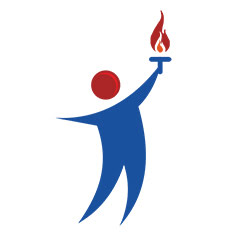
Announcements

Announcements

Meridean Overseas
Updated On 30 December 2023 & Read Time 13 minutes
5.6k
Canada welcomes international students to study in top-ranking universities through three intakes – September Intake, January Intake, and May Intake. Although all intakes in Canada provide good opportunities but, choosing the best intake in Canada is crucial for international students planning their academic venture.
Recently, Canada has opened doors for international students for May and September 2024 intakes. However, understanding which intake is best out of three is challenging.
Are you planning to study in Canada? If yes, then this blog is for you. We have come up with this blog where we are providing a detailed overview of the Canada Intakes 2024, focusing on their benefits, top university list, and complete procedure to apply on time. Let’s read the blog and know the complete information of all 3 intakes in Canada 2024.
Table of Contents
In Canada, academic intakes refer to specific times of the year when students can commence their studies. There are 3 intakes in Canada 2024, which are as follows.
|
Canada Intakes 2024 |
Universities (Admission Window) |
Colleges (Admission Window) |
|
Fall Intake (Sep Intake) |
October 2023 to January 2024 (Preceding year) |
February to April (Same year) |
|
Winter Intake (Jan Intake) |
Feb 2023 to June/July 2023 (Preceding year) |
August to September (Preceding year) |
|
Spring / Summer Intake (May Intake) |
September 2023(Same year) |
September to December 2023 (Same year) |
Note - The upcoming intakes in Canada are in May and September 2024. For the January Intake 2024, the applications have been closed.
The September intake is the best intake season in Canada for international students. This intake, known as fall intake in Canada, offers a plethora of advantages in job and career growth.
Moreover, the September intake in Canada offers a diverse range of courses and extracurricular activities that enhance the overall academic experience. Although competitiveness may pose challenges, but the opportunity to build strong networks from the beginning creates a supportive environment for international students.
The September intake in Canada is undoubtedly the most popular intake among international students who want to study in Canada. Here is a closer look at why it might be the right choice.
Beginning in September aligns students with the regular job market cycle, giving them a head start in their careers upon graduation.
September marks the onset of favourable weather conditions, allowing international students to adjust to Canadian weather gradually.
The Fall intake in Canada typically offers a broader selection of courses and extracurricular activities.
Starting in September allows students to immediately build strong networks with their peers.
Below is the list of universities in Canada for September Intake 2024.
|
Universities in Canada for September Intake |
QS World University Ranking 2024 |
|
21 |
|
|
30 |
|
|
34 |
|
|
11 |
|
|
University of Waterloo |
112 |
|
114 |
|
|
Université de Montréal |
141 |
|
University of Calgary |
182 |
|
McMaster University |
189 |
|
University of Ottawa |
203 |
|
209 |
|
|
Dalhousie University |
298 |
|
Simon Fraser University |
318 |
|
322 |
|
|
University of Saskatchewan |
345 |
|
353 |
|
|
Concordia University |
387 |
Here is the process of applying to Canadian universities for September intake 2024.
Step 1 – Almost all universities participate in September Intake 2024. So, you should deeply research your university and course for the best experience.
Step 2 – Shortlist the universities as per their QS rankings, academic excellence, and career opportunities and check their eligibility requirements.
Step 3 - Meet all Eligibility Criteria and fulfil language proficiency requirements by getting a good band score in IELTS.
Step 4 – Start filling the application, collect the necessary documents, and submit it.
Step 5 - Wait for the response from the university and check the university portal from time to time to know the application status.
Embark and excel in your study abroad journey with our expert team!

The January intake in Canada 2024 provides flexibility and a unique academic schedule. January intake is smaller than the September intake, but it offers advantages, especially for postgraduate students. The flexibility to transition between institutions or courses and the potential for more personalised attention due to smaller intakes are notable benefits of this intake. Therefore, for international students who want to complete their post-graduation, the January intake is the best intake season in Canada for them.
Before checking the list of universities that participate in January Intake in Canada 2024, let’s first know the benefits of studying in this Intake.
The January intake is advantageous for postgraduate students and those seeking specialised courses.
Students can use the January intake in Canada to transition between institutions or courses, allowing for greater flexibility.
Smaller intakes in January facilitate a more personalised learning experience with increased interaction between students and professors.
Students starting in January may find potential cost advantages compared to the more competitive September intake.
Here is the list of universities in Canada for January Intake 2024.
|
University in Canada for January Intake |
QS World Ranking 2024 |
|
McGill University |
30 |
|
University of Toronto |
21 |
|
University of British Columbia |
34 |
|
University of Alberta |
111 |
|
McMaster University |
189 |
|
University of Waterloo |
112 |
|
University of Ottawa |
203 |
|
University of Calgary |
182 |
|
Queen's University at Kingston |
209 |
|
Simon Fraser University |
318 |
|
Carleton University |
671-680 |
|
University of Manitoba |
671-680 |
|
University of Windsor |
641-650 |
Check the step-by-step process to apply to the universities in Canada for January intake.
Step 1 - Identify programs that offer a January intake in Canada.
Step 2 - Check the eligibility criteria to meet the academic and language requirements.
Step 3 - Collect all required documents, including transcripts, SOP, CV, Photograph, and letters of recommendation.
Step 4 - Take language proficiency tests after preparing for it and get a good band score.
Step 5 - Fill all the required details and submit your applications to the selected universities. Make sure you submit all the correct details.
The May Intake or Spring Intake in Canada, though less common, presents unique advantages for those considering an academic journey in Canada. With potentially fewer applicants, students applying in the May intake may enjoy higher chances of securing admission. The opportunity for a close-knit community due to the smaller intake size is a unique benefit.
However, the less common nature of the May intake in Canada may raise concerns about program recognition and the availability of a broad range of courses. But, if you find your program in May intake, then this is the best intake season in Canada for you. It is a less competitive entry point, providing international students with a unique academic experience.
Below, you can check the reasons for choosing the May Intake in Canada 2024.
With potentially fewer applicants, students applying in May might have higher chances of securing admission.
May intake in Canada offers an opportunity for students taking a gap year to start their academic journey.
Starting in May provides students with the chance to experience Canada during the spring, with pleasant weather conditions.
For international students from the Southern Hemisphere, the May intake aligns well with their academic calendars.
Check the list of universities that open their doors to international students in May Intake in Canada.
|
University in Canada for May Intake |
|
Durham College, Oshawa, Ontario |
|
Georgian College, Barrie, Ontario |
|
Conestoga College, Kitchener, Ontario |
|
Sheridan College, Oakville, Ontario |
|
Niagara College, Welland, Ontario |
|
University of Winnipeg, Winnipeg, Manitoba |
|
Nor Quest College, Edmonton, Alberta |
|
University Canada West, Vancouver, British Columbia |
|
Southern Alberta Institute of Technology, Calgary, Alberta |
|
Fleming College Toronto, Ontario |
|
Niagara College, Toronto, Ontario |
|
Vancouver Community College, Vancouver, British Columbia |
|
Bow Valley College, Calgary, Alberta |
|
Selkirk College, Castlegar, British Columbia |
|
Trinity Western University, Langley, British Columbia |
|
Capilano University, North Vancouver, British Columbia |
|
George Brown College, Toronto, Ontario |
|
Cape Breton University, Sydney, Nova Scotia |
Below, you can check the procedure to apply for May Intake in Canada.
Step 1 - Identify May Intake Programs and choose any one as per your preference as May intake provides fewer courses.
Step 2 - Ensure you meet academic and language proficiency requirements.
Step 3 - Gather all necessary documents, including academic transcripts and letters of recommendation.
Step 4 - Take required language proficiency tests such as IELTS and TOEFL.
Step 5 - Complete and submit online applications to chosen universities.
Applying to any intakes in Canada requires a set of essential documents, which are provided below.
Completed applications for college or university
Your study plan-specific visa or student permit
All prior academic transcripts
Application Fees
Scores on standardised tests (to prove your English proficiency)
Statement about knowledge requirements (if the institution so requests)
Academic recommendation letters and a statement of purpose
Reference letters from the workplace
Documentation of financial stability
Medical Certificate
Immigration paperwork
Passport
Photo
Letter of authorisation from an institution or college
GIC—Guaranteed Information Certificate
PCC—For Quebec
CAQ—For Quebec
Co-op Letter (if the LOA mentions a cooperative letter)
Receipt for tuition fees
CV/ resume
Health insurance (if necessary)
IELTS/TOEFL results for English competence; a portfolio (if necessary)
Work-related letters
Understanding application deadlines is crucial for a successful admission process. Deadlines for each intake vary between universities and programs. However, we have provided a deadline that can be considerable to apply for intakes in Canada 2024.
|
Deadlines to Apply for Intakes in Canada 2024 |
|||
|
To-do list |
May Intake Deadline |
January Intake Deadline |
September Intake Deadline |
|
Research and Shortlist universities Check the Eligibility criteria and requirements for each university. |
May & June 2023 |
January to February 2023 |
July to August 2023 |
|
Take English proficiency tests and other entrance exams (if required). |
July to September 2023 |
December 2022 to February 2023 |
September to October 2023 |
|
Gather all the documents and apply to universities. |
September to December 2023 |
March to May 2023 |
November 2023 to January 2024 |
|
Compare and accept an admission offer, apply for a visa or avoid the hassle. |
January & February 2024 |
June to August 2023 |
February to April 2024 |
|
Apply for scholarships and find accommodation |
March & April 2024 |
September to November 2023 |
May to July 2024 |
|
Enjoy the start of your exciting journey. |
May 2024 |
December 2023 |
End of August or September 2024 |
Understanding the pros and cons of different intakes can help students make informed decisions based on their preferences, academic goals, and personal circumstances. Therefore, below, you can check the pros and cons of different intakes.
|
Aspect |
September Intake |
January Intake |
May Intake |
|
Pros of Different Canada Intakes 2024 |
|||
|
Academic Calendar |
Aligns with the regular academic year, providing a traditional schedule. |
Offers flexibility for students who missed the September intake. |
Less common, potentially resulting in fewer applicants and higher chances of admission. |
|
Weather Conditions |
Enjoy pleasant weather during the start of the academic year. |
Provides a transition for students arriving in the Canadian winter. |
Allows students to experience Canada during the springtime. |
|
Course Availability |
Offers a wide range of courses and extracurricular activities. |
Smaller intake may result in limited course availability. |
May have fewer course options compared to the more popular intakes. |
|
Networking Opportunities |
Opportunity to build strong networks with peers from the beginning. |
Smaller intakes may allow for more personalised networking. |
Potential for a close-knit community due to fewer students. |
|
Cons of Different Canada Intakes 2024 |
|||
|
Competitiveness |
Highly competitive due to a large number of applicants |
May face intense competition for limited spaces. |
Limited popularity may raise concerns about program recognition. |
|
Weather Conditions |
Arrival during the Canadian winter can be challenging for some students. |
Adjustment to Canadian winter conditions may be challenging. |
Starting in May might limit the time students experience Canadian winters. |
|
Gap between Graduations |
Graduates in line with the regular academic job market cycle. |
May have a gap between graduation and the typical job market cycle. |
Potential gap between graduation and the start of job opportunities. |
|
Decision-Making Timeframe |
Longer decision-making timeframe due to the competitive nature. |
Faster decision-making as there might be fewer applicants. |
Quick decision-making might be necessary for the less common intake. |
|
Flexibility for Postgraduate Students |
More courses are available for postgraduate studies. |
Offers flexibility for postgraduate students looking for specialised courses. |
May be suitable for postgraduate students seeking unique advantages. |
In conclusion, the intakes in Canada 2024 offer a range of opportunities for international students. Whether choosing the popular September intake for an early start in the academic year, the January intake for flexibility, or the less common May intake for unique advantages, students can tailor their educational journey to meet their individual needs.
Above, we have covered the complete details of all Canada intakes 2024. You can choose any of these intakes as per your preferences. We hope this blog finds you helpful. If you have doubts, contact our expert counsellors at Meridean Overseas Education Consultants (MOEC). You can also take free online counselling through our website. Our expert counsellors will provide you with the best support and guidance you need for admission and visa. In addition, they will help you shortlist the universities according to your profile. For more information or any queries, contact application02@meridean.org or 1800-1230-00011.
Q1. Can I apply for multiple intakes simultaneously?
Ans. Yes, you can apply for multiple intakes, but it's essential to manage the application process carefully and ensure you can fulfill each requirement.
Q2. Are scholarships available for all intakes in Canada 2024?
Ans. Scholarships are typically available for various intakes in Canada 2024, but eligibility criteria may vary. You should check the universities for specific scholarship opportunities.
Q3. What is the processing time for student visa applications?
Ans. The processing time for student visa applications varies. You should always apply well in advance and check the official immigration website for the latest information.
Q4. Can I work part-time during my studies in Canada?
Ans. Yes, international students in Canada are generally allowed to work part-time during their studies. However, there are regulations and limitations, so it's crucial to understand the rules.
Q5. Are there language proficiency requirements for admission to Canadian universities?
Ans. Yes, most Canadian universities require proof of English proficiency through tests like IELTS or TOEFL.

Contact MOEC Experts for Study Abroad Guidance!
By using our site, you agree to our use of cookies.

Hurry up before admissions close.

